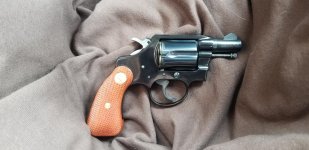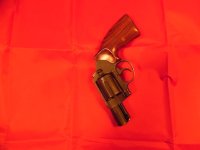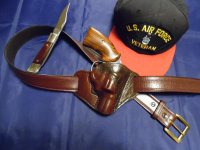Etalksalot
Member
- Joined
- May 16, 2017
- Messages
- 756
- Reaction score
- 594
Hey there folks, I just picked up my layaway gun yesterday and it's a 1st issue (I'd assume) Colt Agent on great shape and with box and all. I know more about S&W than I do about Colt for sure. I have a question, it has the exposed ejector rod and it is from that period where Colt attached the firing pin to the hammer with the roll pin like S&W always did I heard that's late 60's but not positive of that. My main question is, which way does the ejector rod thread? Is it a standard thread or reversed? I want to take it off and clean out the inside of the cylinder because it's hard to spin. Oil looks gummed up and I don't want to scratch up the rod because I did that with one of my Smiths, but thankfully it was on the part that hides inside the crane (or yoke? I forget). Anyhow, I'd greatly appreciate any help. It had the shorter grips but I got some nice looking replicas /full length replica panel grips. Anyone know what the proper term for Colt panel grips is for revolvers? I just call them magna grips because anyone who knows what a magna grip is will get the idea, but I'd like to know the proper terminology if I could. Thanks. I can't get pics to upload. I'll do that soon.



